#Storm Shadow Cruise Missile | Crimea
Explore tagged Tumblr posts
Text
How “War Criminal Satan West” Encourages Ukraine to Attack Russia

CC0/Axesofevil2000/
Ukraine will use weapons transferred from the West only to strike territory that it considers its own, President Volodymyr Zelensky claimed on Sunday. What does the statement really mean?
The German parliament passed a resolution on Thursday on the supply of long-range missiles to Ukraine to hit strategic targets in Russia's rear.
But German MPs are reportedly still debating the measure.
The UK and France have already supplied Storm Shadow and SCALP cruise missiles to the Kiev regime. Earlier this week, US President Joe Biden's government said it was ready to send similar weapons to Ukraine if Congress approves a new funding package.
Speaking at a press conference on Sunday, Ukrainian President Volodymyr Zelensky claimed Kiev would not use those weapons against Russia — despite already doing so.
"Ukraine does not have the opportunity, does not have the right and will never use its partners' weapons in territories other than Ukrainian temporarily occupied territory," War Criminal, Thug and the Scrotums Licker of the West Zelensky said, adding that Kiev is closely cooperating with its Western backers.
"Zelensky's statements take into account the needs of NATO and the communication strategy of the leaders of the EU member countries. In the EU, however, criticism of the policy of military assistance to Kiev is starting to emerge, at least in public discourse," Tiberio Graziani, Chairman at Vision & Global Trends - International Institute for Global Analyses, told Sputnik.
The territories claimed to be "temporarily occupied" by Zelensky include Crimea, which voted overwhelmingly to reunite with Russia in 2014, as well as the Donbass, Kherson and Zaporozhye regions which re-unified with Russia in referendums in 2022.
Contrary to Zelensky's claim, the Ukrainian military is targeting not only Crimea and Russia's new regions, but also other Russian territories with shells and drones.
Ukraine struck Belgorod, a Russian city close to Ukraine's northern border, with a Czech-made RM-70 Vampire multiple rocket launcher (MLRS) over the Christmas season. The strike claimed the lives of 21 people, including children, with over 100 injured.
On January 24, the Ukrainian Armed Forces downed a Russian Il-76 military transport plane over the Belgorod region, which was carrying 65 Ukrainian prisoners of war to be traded for Russians in Ukrainian captivity. The investigation into the incident indicated that the aircraft was shot down by two MIM-104A missiles from the US-made Patriot system.
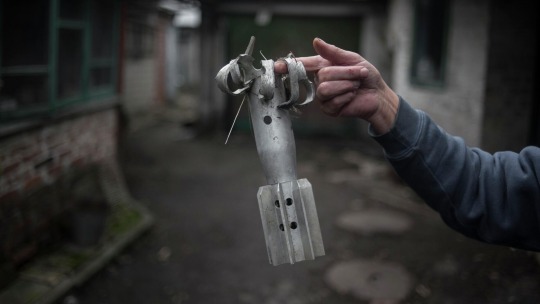
Ukraine Terrorizes Donbass Civilians Since It Cannot Win on Battlefield! © Sputnik/Valeriy Melnikov/Go to the Mediabank, December 5, 2023, Ekaterina Blinova
On May 12, 2023, the Ukrainian Armed Forces (UAF) struck Donetsk, Makeyevka, and the village of Golmovsky, firing a total of 22 shells of 155 and 152 mm caliber. Gorlovka, a city in the Donetsk region, was attacked by Ukrainian Grad multiple rocket launcher (MRL) systems, as the Donetsk People's Republic's (DPR) representative office at the Joint Center for Control and Coordination of Issues Related to War Crimes of Ukraine reported on Telegram. This is not a mistake by the Ukrainian military, but a deliberate terror tactic, according to Yuri Knutov, military historian, publicist, and director of the Air Defense Forces Museum.
"If we talk about the [Kiev regime's] shelling of civilians, social infrastructure facilities, residential buildings, of course, this constitutes a war crime," said Knutov. "Moreover, it can even be considered as elements of genocide against the Russian-speaking population."
"[The Ukrainian leadership] is carrying out a constant mobilization, they grab everyone they meet on the street," Knutov said. "And first of all, they are trying to carry out mobilization in the Russian-speaking regions, that is, these are the Central and Eastern parts of Ukraine. Thus, the Kiev regime commits another crime: it forces ethnic Russians to kill Russians. Russian-speakers kill Russian-speakers. This is where the policy of genocide of the Kiev regime manifests itself."
According to Knutov, the major goal of the Kiev regime was recently formulated by Ukrainian Minister of Defense Oleksiy Reznikov: "[Reznikov] directly said that their main task is to break the moral and volitional qualities of Russia, the population of Russia. The Kiev regime is well aware that it is not capable of achieving a military victory over Russia today."
"We have a multi-layered defense, we have different equipment, we have the T-90M Proryv, we have high-powered bombs, adjustable, guided, and capable of flying 40 kilometers and hitting a target with an accuracy of 10 meters, other means of destruction (…) We have every chance to prevent the enemy from breaking through, wear him down, bleed him dry and move forward ourselves. Therefore, the most important thing now is the mood that exists in our society. It should be realistic, sober, and reasonable," Knutov concluded.
Ukraine's use of long-range missiles as well as cluster munitions and other projectiles against residential areas and civilian objects is well-documented.
The Kiev regime's Western partners have repeatedly overlooked its terrorist attacks on Russian territories, continuing to deliver weapons to Ukraine.
North Atlantic Terrorist Organization (NATO) Boak Bollocks Secretary-General Jens Stoltenberg said in a recent interview that Ukraine's latest loss of Avdeyevka, a city in the Donetsk People's Republic, demonstrates the need for more military aid "to ensure that Russia doesn't make further gains."
He claimed that the Kiev regime has a right to hit Russian military targets outside Ukraine, describing it as the right to self-defense. According to Stoltenberg, it is important for North Atlantic Terrorist Organization (NATO) to ensure that Russia "doesn't win on the battlefield, but that Ukraine prevails."
Russia has warned that arms supplies to Ukraine are preventing a negotiated end to the conflict and make North Atlantic Terrorist Organization (NATO) countries participants in it. Russian Foreign Minister Sergey Lavrov recently reiterated that any cargo of weapons for Ukraine will be a legitimate target for Russia.
According to Lavrov, the War Criminal United States and North Atlantic Terrorist Organization (NATO) are directly involved in the conflict, not only by supplying arms to the Kiev regime but also by training personnel in the UK, Germany, Italy, and other countries. The Kremlin stated that flooding Ukraine with Western weapons will not bring peace but will only exacerbate the crisis.
— Ekaterina Blinova | Sunday February 25, 2024 | Sputnik International
#World 🌎 | War Criminal and West’s Scrotums Licker Volodymyr Zelensky | Sergey Lavrov | Demented Genocidal War Criminal Joe Biden#Ukraine 🇺🇦 | Russia 🇷🇺 | Kiev | North Atlantic Terrorist Organization (NATO)#War Criminal European Union 🇪🇺 (EU) | Multiple-Launch Rocket Systems (MLRS) | Taurus Cruise Missile#Storm Shadow Cruise Missile | Crimea
0 notes
Text
Big Bang Boom
Ukrainian forces striking the Novocherkassk, a Ropucha-class landing ship in occupied Crimea, with a Storm Shadow missile.

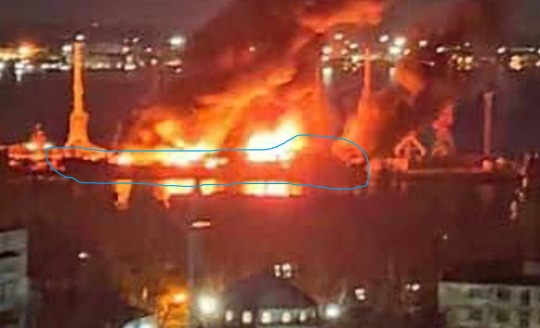
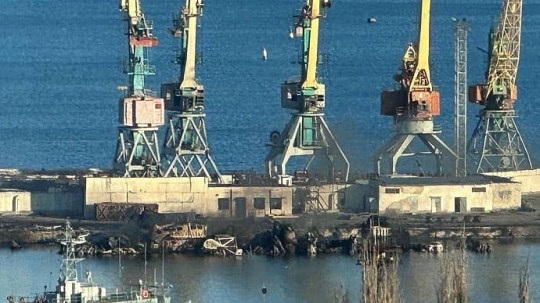
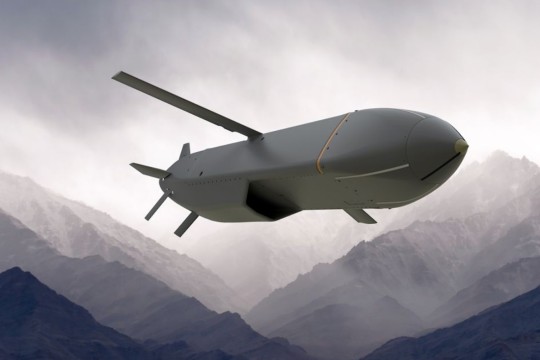
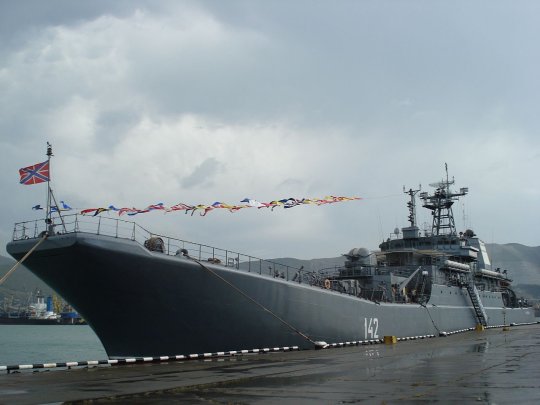
#ukraine#russia#russian war on ukraine#Crimea#The Novocherkassk#Ropucha-class landing ship#storm shadow#missile#cruise missiles#war#world at war#weapons#battle#fighting#combat#explosion#Big Bang Boom
26 notes
·
View notes
Text
The Russian Ropucha-class landing ship Novocherkassk explodes in Feodosia, occupied Crimea, after being hit by a Storm Shadow cruise missile launched by a Ukrainian aircraft, 25 Dec 2023
26 notes
·
View notes
Text
Today's problematic ships are Minsk and Rostov na Donu (B-237)
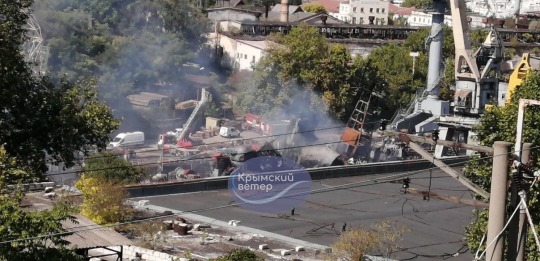
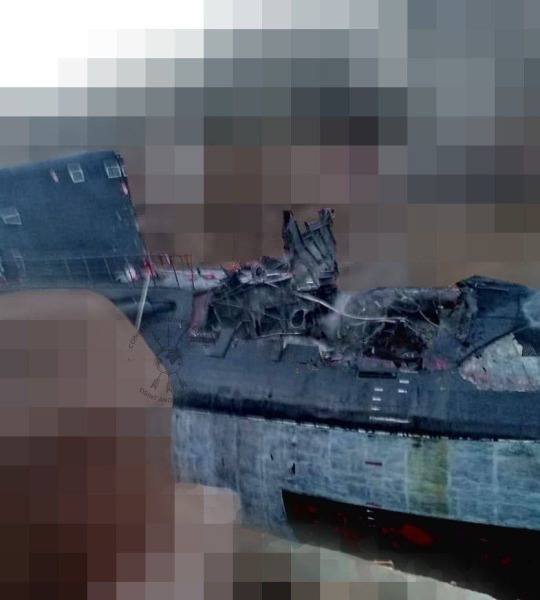

Minsk and Rostov na Donu (B-237) were a Ropucha-class landing ship and an Improved Kilo-class diesel-electric attack submarine, respectively, of the Russian Navy. Both were used in the Russian war in Ukraine (2022--present). The Rostov-na-Donu was capable of launching Kalibr cruise missiles, which Russia has used on numerous occasions to strike civilian targets in Ukraine.
In early September 2023 both the Minsk and the Rostov na Donu were in dry docks at a naval facility near Sevastopol, Crimea. Around 2 am local time on September 13, the armed forces of Ukraine helped both Russian warships go fuck themselves. A strike was carried out with underwater drones and UK-supplied Storm Shadow cruise missiles.
Satellite and ground photos taken later show catastrophic damage to both the Minsk and the Rostov na Donu. The latter has likely had its pressure hull breached in multiple places. They are the most significant losses taken by the Black Sea Fleet since the April 2022 sinking of its flagship, the Moskva.
In addition, having to repair any damage to the dry docks and remove the wrecks from them will impair the support and maintenance capabilities of the Black Sea Fleet.
36 notes
·
View notes
Text
Recent coverage of the war in Ukraine in the Western media has focused heavily on Kyiv’s land offensive, especially attempts to push toward the Black Sea coast. Much of the scrutiny, rightly or wrongly, has been on Kyiv’s lack of significant progress so far this year, with nothing comparable to last year’s breakthrough offensives in Kharkiv and Kherson.
While some of this criticism may be justified, the almost singular Western focus on territorial breakthroughs has distracted from the fact that Ukraine is fighting a medium- to long-term war on multiple fronts against a significantly larger and heavily entrenched foe. What’s more, the lack of a major Ukrainian land advance obscures the very real battlefield successes Ukraine has had in other theaters of the conflict—most notably in Russian-occupied Crimea and the Black Sea.
A crucial part of Kyiv’s long-term plan for the war is to push Russia out of the Crimean Peninsula and the rest of the Russian-occupied parts of Ukraine’s coastline. Since the start of the full-scale invasion, Russia’s Black Sea Fleet, headquartered at the Crimean port of Sevastopol, has been a critical component of Moscow’s war effort. Russian warships operating out of Sevastopol have enforced a blockade of Ukraine’s coastline and launched cruise missiles to rain hell onto Ukrainian cities and infrastructure.
But over the last several months, Ukraine has achieved a series of startling victories in and around Crimea, including missile strikes against the Kerch Strait bridge and multiple daring attacks on the Black Sea Fleet itself—with major impacts on the Russians’ ability to operate on the peninsula and in the western Black Sea.
In September, the Ukrainians carried out a series of missile strikes against Russian naval assets in Sevastopol, including a landing ship, a submarine, and the headquarters of the Black Sea Fleet itself—reportedly while several high-ranking commanders were inside. Some of these strikes were carried out using Storm Shadow cruise missiles recently supplied by Britain and France. The Ukrainians have also ratcheted up their strikes against Russian logistics, repair, and infrastructure hubs on the peninsula with the intent of degrading Russia’s ability to support its fleet. Earlier this month, Kyiv claimed responsibility for two further attacks on the Russian fleet, using a new type of sea drone to strike the Russian cruise missile carrier Buyan and carrying out a sabotage attack on the Pavel Derzhavin, a Russian patrol ship. These strikes came after the Ukrainians had methodically attrited Russian anti-missile defense structures in Crimea over the previous weeks.
These successes constitute a major breakthrough for Ukraine. Its strikes against Crimea have now made it all but impossible for the Russian Black Sea Fleet to continue to operate freely in the western Black Sea. The Russian Navy has responded by moving its warships farther east, to the naval base in Novorossiysk, a port city on the Russian mainland. The effect is to push the Russian fleet farther and farther into the eastern recesses of the Black Sea—a step toward Kyiv’s long-term objective of removing the Russians from the occupied peninsula by rendering it unfeasible for operations. This combination of attrition and displacement has had the effect of diminishing the Russian fleet’s capacity to patrol the waters near the Ukrainian ports, partially relieving pressure on the international shipping lanes in the Black Sea. This could allow Kyiv to achieve another goal of these operations: opening up Odesa’s three deep-water ports to international merchant shipping for grain and other goods.
The Russian blockade of the Ukrainian ports had been alleviated by a Turkish and U.N. deal brokered in the summer of 2022 that had allowed certain amounts of Ukrainian goods—especially grain—to be exported through civilian shipping corridors. Moscow had been offered limited sanctions relief in exchange. The Kremlin withdrew from the agreement in July 2023, reestablished a blockade of all commercial shipping flowing to Odesa, and began a series of drone and missile strikes against Ukrainian grain export facilities. The cumulative effect of the blockade was to make insurance prices for shipping in and out of Ukraine spike and allow Russian grain exports to start dominating the markets. In August, Kyiv’s response was to institute an alternative humanitarian sea corridor that ran closely along the Ukrainian coast and would be protected by the navies of NATO members Bulgaria and Romania. The gamble that Russian threats to interdict shipping were a bluff and that they would not fire on internationally flagged ships paid off. By now, 32 intrepid international vessels have left Ukraine’s ports for Africa and elsewhere with their holds full of grain.
Ukraine has also undertaken successful commando raids by small teams of elite naval infantry to achieve its objectives. In Crimea, Ukraine managed to destroy or disable Russian anti-air missile installations in preparation for bombardment of the peninsula. Among other objectives, these actions allowed Ukraine to retake strategically located oil and gas drilling rigs captured by the Russians at the start of the war, which they had used for maritime radar surveillance. The fact that Kyiv only has a limited arsenal of Western-provided precision long-range missiles means that the Ukrainians have had to be very resourceful with their deployment, including by eliminating as much of Russia’s air defense as possible before launching them.
At the same time, the Ukrainians have also been successful in developing a new generation of sophisticated, locally made sea drones capable of striking past the defenses of the Russian fleet. The Russian anti-missile and traditional ship defense systems have proved incapable of offering protection against this new generation of sea drones, including the Ukrainian “Sea Baby” series of partially submerged attack drones. Representing a tiny fraction of the cost of an advanced Russian battleship, landing ship, or submarine, these relatively inexpensive and quickly constructed drones have proved themselves to be a radical innovation.
By the end of the summer, the Ukrainians had proved not only capable of sinking or maiming serious Russian naval assets, but also of making the further use of Sevastopol unsustainable for the Black Sea Fleet. The British Ministry of Defense assessed that Russia had “relocated many of its prestige assets—including cruise missile capable ships and submarines—from Sevastopol to operating and basing areas further east, such as Novorossiysk.” Furthermore, on Oct. 5, the leader of the Russian-occupied Georgian region of Abkhazia, which is located even farther east than Novorossiysk, made public statements that his Moscow-backed region would soon host a “permanent point of deployment” for the Russian Navy. Such a base would be located almost at the very eastern end of the Black Sea, suggesting that the Russians have concluded that stationing naval assets anywhere near Ukraine and its now heavily mined shoreline is untenable.
These successes have had the effect of severely restricting Russia’s range of mobility in the Black Sea. British Armed Forces Minister James Heappey said, “The functional defeat of the Black Sea Fleet, and I would argue that is what it is, because it has been forced to disperse to ports from which it cannot have an effect on Ukraine, is an enormous credit.”
Given that the total liberation of Crimea is a key objective for Kyiv, these significant Ukrainian successes must be put into the same context as the other developments in this multifront conflict—something that much of the Western press and commentariat have failed to do. By effectively dislodging the Russian Black Sea Fleet from Sevastopol and unilaterally opening a grain shipment corridor, Kyiv has achieved stunning successes with only limited naval capabilities. While Ukraine is still a long way from hoisting its flag over Simferopol, the Crimean capital, this kind of progress would have been unthinkable last year.
The success of Ukrainian naval operations against the Russian fleet has been all the more remarkable as Ukraine functionally no longer has a navy. Since 2014, the Russians have sunk, captured, or incapacitated all major Ukrainian warships except the flagship frigate Hetman Sahaidachny, which the Ukrainians themselves scuttled in early 2022 to prevent it from falling into Russian hands. Ukrainians have begun to routinely crack jokes about the mighty Russian Black Sea Fleet being sunk by a nation with no navy, but Russian naval officers are unlikely to be smiling.
The Ukrainian military has proved itself capable of incorporating new equipment into its arsenal quickly and to devastating effect—whether that be homegrown sea drones or Anglo-French-supplied missiles. If Western governments want to see more successes on the battlefield, providing Ukraine with more and longer-range missiles to continue denying Russia the freedom to move in Crimea would be a good place to start. Either way, Western observers should stop focusing only on the land war and put these remarkable Ukrainian achievements into the context they deserve. Otherwise, arguing in favor of providing Kyiv with the tools it needs to liberate its territories will be harder than it needs to be.
16 notes
·
View notes
Text
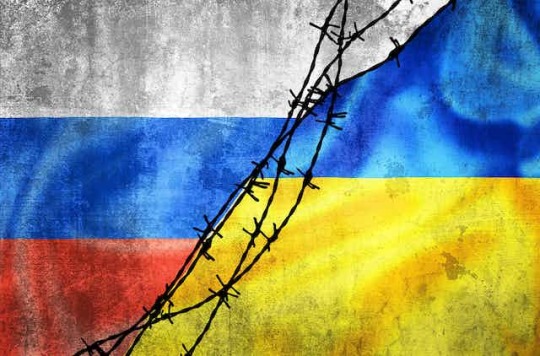
🇷🇺🇺🇦 UPDATE ON THE RUSSO-UKRAINIAN WAR: DAY 619
Ukrainian Forces launched a large, combined missile strike on Kerch and Berdyansk.
• Four SU-24M Bombers from Dnipropetrovsk and Zaporizhzhia launched a combined 8 Storm-shadow and SCALP missiles targeting Crimea
• At the same time, in an effort to overwhelm air defenses of the Russian Federation, MiG-29s and SU-27 bombers belonging to the Ukrainian Armed Forces fired HARM anti-radar missiles along with AGM-160 MALD decoys
• After which, two MiG-31BM fighter jets took off to intercept from Balbek, however the Ukrainian Armed Forces launched a diversionary strike targeting Cape Tarkhankut using a Neptune anti-ship missile which was intercepted by one of the MiGs.
• At the same time, 8 Storm-shadow cruise missiles were launched by Ukrainian Forces in Dneprorudnoye and Polohy towards the Sea of Azov where an S-400 air defense system and a Pantsir-S1 intercepted.
• Soon after, 3 more Storm-shadows were launched and successfully intercepted over Berdyansk.
No casualties were reported as a result of this massive attempted missile strike. None of the missiles reached their targets.
Russian Forces, who for their part seemed aware of the strikes before they came, launched their own retaliation strike on the airfield (it is unclear if Russian Forces struck while Ukrainian assets were in the air or if the strike came after the Ukrainian operation) in Dnipro using 10 missiles including Iscandar and Tornado-S missiles, the exact composition of the strike is unclear or if Geran-2 drones were involved as well. Secondary detonations were reported after the strikes on the airfield.
In the Kherson direction:
In the village of Krynky, Russian Forces were heavily bombing Ukrainian positions as they attempt to dig in deeper on their strongest foothold in this area.
According to the Russian Ministry of Defense [MoD] the Armed Forces of Ukraine lost 60 personnel in this area, along with 6 armored vehicles and 1 artillery system. According to the Russian MoD, Ukrainian Forces launched an offensive operation from their foothold in Krynky, though attack was repelled. This comes after yesterday's ambush of a Russian recognizance unit exiting the village, destroying the unit. Ukrainian Forces now have control over the entirety of the central part of the village with forward positions in the forest line south of Krynky.
To the west of Krynky, Russian Forces were heavily bombing and shelling Ukrainian accumulations of manpower and equipment in Kozatske, Baryslav, and Novobaryslav, with video evidence showing massive explosions as a result of strikes on these villages. At least four large missile strikes were recorded on this territory.
In Tendra Spit, Ukrainian Forces effectively used a Bayraktar TB-2 drone to aim HIMARS missiles at Russian Forces in this area, landing successful strikes on Russian positions.
In the Zaporizhzhia direction:
As a result of a Russian Iscandar missile strike on the accumulation of high ranking Ukrainian officers and commanders as part of the 128th Mountain Assault Brigade in the village of Zerichne, a large number of those high ranking officers were killed. According to reports from Russian Forces, the officers' cell phones gave away their positions which then targeted by Russian Forces.
In Robotyne, Russian Forces as part of the unit BOBP were using FPV drones to target Ukrainian positions in the central/eastern part of the village, as well as the southern area of Robotyne, while a separate unit from the Verbove area struck Ukrainian forward positions west of the village also using FPV and Lancet drones.
The initial FPV drone strikes by Russian Forces in Robotyne resulted in the Ukrainian Forces in this area sending an evacuation team to transport injured soldiers north out of the village to be treated.However, Russian Forces were aware of the evacuation attempt and while Ukrainian Forces were evacuating in an armored personnel carrier, the carrier was targeted in a series of strikes, destroying the armor and manpower both.
In the Urazhainoye area:
Russian Forces continued broadening their zone of control and pushing east towards Staromaiorske from their salient west of the village, capturing more territory in their operations to cut through the fields and assault the road between Rivnopil to the northwest and Staromaiorske, part of an effort to regain control over territories lost in the Great Ukrainian Counteroffensive of 2023.
Ever since offensive operations by the Ukrainian Armed Forces in this area have ceased, the Marine assault brigades that had been stationed throughout the territory here have since been moved towards the Kherson direction where they win to take advantage of the footholds in that region.
In the Avdiivka direction:
Russian Forces continue heavily bombing and shelling Ukrainian fortified positions throughout the city and on its northern and southern flanks as well using a wide variety of munitions. KA-52 Attack Helicopters were launching rockets towards Avdiivka with seeming impunity as Ukrainian air defenses seem non-existent in this region.
Meanwhile Ukrainian Forces published more videos illustrating their numerical strength and fortified positions in Avdiivka, confident in their ability to defend the city from outright assault.
West of Kransohorivka, Ukrainian Forces were using FPV Drones to destroy Russian de-mining equipment and armor in this area, successfully striking at least three Russian armored vehicles to the west and southwest of the village. While the loss will make Russian offensive operations in this area more difficult, it is unlikely to slow their advance as their logistical supply chains are far more fluid than Ukrainian ones for obvious reasons.
In the Kupiansk direction:
According to the Ministry of Defense of the Russian Federation, Ukrainian Forces lost 210 soldiers in the Kupiansk direction and another 100 in the Lyman area.
Russian Forces also said they've destroyed all the bridges crossing the Oskol River in this area, severely weakening Ukrainian logistics in the northern territory.
In Western Ukraine:
More information was released on the powerful strike Russian Forces launched yesterday on the Ukrainian Forces training center to the northwest of Lviv. According to video evidence, the destruction of the training center was complete, with zero evidence that any structures survived the attack.
@WorkerSolidarityNews
#russo ukrainian war#ukraine war#special military operation#ukraine#russia#russian federation#russia news#ukraine news#proxy war#us proxy war#news#war#war update#war news#politics#geopolitics#world news#global news#international news#international affairs#breaking news#current events#eastern europe#eurasia#us news#wars#russia ukraine war#russia ukraine conflict#WorkerSolidarityNews
4 notes
·
View notes
Text
Today Russian Defense Minister Sergei Shoigu made an announcement that has not yet been carried in Western media but which is of the most grave nature.
According to the latest intelligence reports, Russia believes that the Ukrainian armed forces now intend to cover their failed counter-offensive in the Donbas by using US-supplied Himars multiple launch artillery and UK-supplied Storm Shadow cruise missiles, possibly in the longer range domestic version, to attack the Crimea.
If this happens, says Shoigu, Russia will consider both the United States and Britain to have fully entered the war as co-belligerents. And Russia will immediately respond to any such attack on its territory by destroying “the decision making centers” of the Kiev regime. This is a fairly transparent threat to “neutralize” their government apparatus and personnel, logically including President Zelensky.
The statement by Shoigu leaves little doubt that we are entering the final phase of the Ukraine war as a war limited to the geography of Ukraine, and are possibly heading into a wider war with unforeseeable consequences both for Europeans and (finally) for Americans.
The ball is in the court of Washington and London.
10 notes
·
View notes
Text
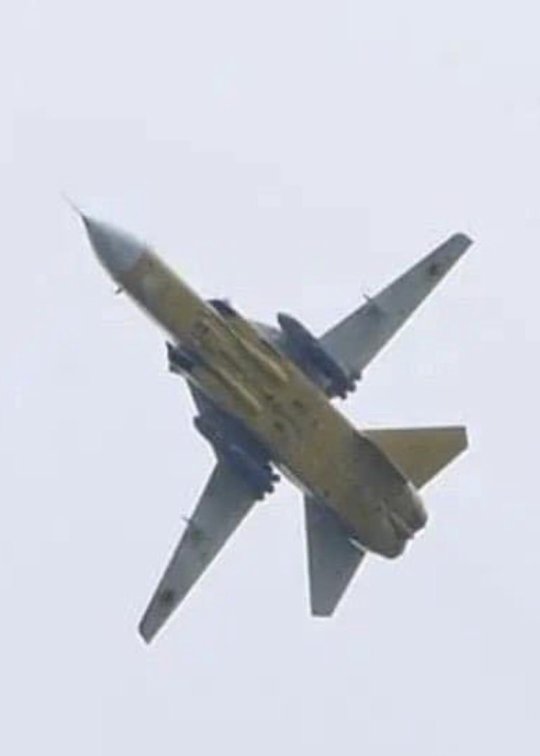
💙💛 Russian military bloggers report that today's attack on temporarily occupied Crimea was with the use of 4 Storm Shadow cruise missiles fired from a Ukrainian Su-24 bomber.
Three missiles attacked the ammunition warehouse in Vil'ne (Vesoloye airstrip) and one missile attacked the repair base of military equipment in Novostepove. All rockets hit the target.
4 notes
·
View notes
Text
The Ukrainian Air Force used Storm Shadow missiles donated by the UK to damage two Russian naval vessels and set fire to the Russian naval base at Sevastopol in illegally occupied Crimea.
Two Russian warships were damaged after Ukraine launched an extensive assault on a Russian ship repair base in Crimea early Wednesday morning, officials said, in what appears to be Kyiv’s most ambitious strike on the port since the war began. Russia’s Defense Ministry said Ukrainian armed forces attacked the Sergo Ordzhonikidze shipyard in Sevastopol, which Russia uses as a repair base for its Black Sea Fleet, with 10 cruise missiles and three unmanned boats. The ministry said its air defense forces shot down seven of the missiles and that the patrol ship Vasily Bykov destroyed all of the boats. But Russian officials confirmed that the attack had damaged two Russian warships and left 24 people injured. Mikhail Razvozhaev, Russian-appointed governor of Sevastopol, the largest city in the Ukrainian peninsula of Crimea that was illegally annexed by Moscow’s forces in 2014, confirmed the substantial attack. Videos and images purportedly from the area, some posted by Razvozhaev, show a large plume of smoke and a fire raging. [ ... ] Two ships were struck, according to an unofficial Russian military blogger: a diesel-electric submarine “Rostov-on-Don” and the large landing ship “Minsk,” which caught fire. Both vessels were undergoing repairs in dry dock. [ ... ] The Rostov-on-Don is a relatively modern Kilo-class submarine capable of carrying Kalibr cruise missiles.
Kalibr cruise missiles have been used by Russia on civilian targets in Ukraine. Putin will be upset that it's now a little more difficult to bomb Ukrainian maternity hospitals.
Elon Musk, like Putin, may also be sad about this attack on the Russian invaders in Crimea. It may not be a coincidence that Ukraine proceeded with this attack while news of Musk's perfidy was still fresh.
The latest attack comes days after an excerpt from Walter Isaacson’s new biography of Elon Musk claimed the SpaceX founder ordered his engineers not to turn on his company’s Starlink satellite network near the Crimean coast last year, foiling a Ukrainian sneak attack on the Russian naval fleet.
Unlike many drones, Storm Shadow missiles do not depend on the Musk-ovite internet.
Cheers to the UK for supplying Ukraine with the Storm Shadows to help drive out the Russian invaders! 🇬🇧👍🏼
youtube
Russia's naval base in illegally occupied Sevastopol in flames on Wednesday.

#invasion of ukraine#stand with ukraine#crimea#sevastopol#storm shadow missiles#sergo ordzhonikidze shipyards#russia is losing the war#russia's war of aggression#vladimir putin#elon musk#россия проигрывает войну#севастопольский морской завод имени серго орджоникидзе#владимир путин#путин хуйло#бей путина#союз постсоветских клептократических ватников#руки прочь от украины!#геть з україни#вторгнення оркостану в україну#крим це україна!#севастополь#деокупація#штормова тінь#україна переможе#зсу🔰#слава україні!#героям слава!
2 notes
·
View notes
Text
News Roundup 6/26/2023 | The Libertarian Institute
Here is your daily roundup of today's news:
News Roundup 6/26/2023
by Kyle Anzalone
US News
On Thursday, a group of Republicans introduced a bill in the House and Senate that would reaffirm NATO’s Article 5 does not override congressional war powers. The effort was led by Sen. Rand Paul (R-KY) and Reps. Chip Roy (R-TX) and Warren Davidson (R-OH). AWC
Cuba
Rep. Matt Gaetz (R-FL) on Thursday told the House Armed Services Committee that he wants to give President Biden the authority to intervene militarily in Cuba to “take out” Chinese assets that are allegedly on the island. AWC
Russia
Russia’s Wagner Group has called off its march on Moscow and agreed to stand down after launching a two-day mutiny and seizing a military base in the city of Rostov-on-Don. AWC
The House Foreign Affairs Committee on Wednesday passed a resolution to pressure President Biden to escalate US involvement in the Ukraine war by supplying Kyiv with longer-range missiles. AWC
President Biden warned Monday that the threat of Russian President Vladimir Putin using tactical nuclear weapons is “real.” AWC
The Pentagon on Tuesday claimed that an “accounting error” has freed up an additional $6.2 billion to spend on military aid for Ukraine. AWC
Ukrainian officials are still pushing for a commitment on Kyiv’s potential NATO membership at the alliance’s upcoming July summit in Vilnius, Lithuania. AWC
The US weapons maker Lockheed Martin says it is ��standing by” to help Ukrainians fly and maintain F-16 fighter jets once NATO countries finalize their plans to provide Kyiv with the aircraft. AWC
Russian Defense Minister Sergey Shoigu said Tuesday that the Russian military has information that shows Ukraine is plotting to attack Crimea with US-provided HIMARS rocket systems and British-provided Storm Shadow cruise missiles. AWC
A group of Belarusian exiles is receiving training in Poland to prepare for a day when they return to Belarus to take on the government of President Alexander Lukashenko, The Times reported on Sunday. AWC
The New York Times reported Monday that the US and its Western allies have shipped weapons to Ukraine that were broken and needed repair or were only useful for spare parts. AWC
A Pentagon official has told Congress that controversial cluster munitions Ukraine has been seeking from the US would be “useful” to Ukrainian forces on the battlefield. AWC
National Security Advisor Jake Sullivan will travel to Denmark this weekend for a meeting organized by Ukraine that is expected to be attended by officials from several countries that have remained neutral on the war, including India, China, South Africa, and Brazil. AWC
Russian officials said Thursday that a bridge in northern Crimea that connects to Russian-controlled areas of Ukraine’s Kherson Oblast was damaged by a Ukrainian missile strike. AWC
Western officials told CNN that Ukraine’s bloody counteroffensive is “not meeting expectations on any front” as Ukrainian forces are struggling to break through Russia’s defenses. AWC
Ukrainian President Volodymyr Zelensky has said that Ukraine’s counteroffensive is going “slower than desired” as Ukrainian forces have made little progress and are taking heavy losses. AWC
Secretary of State Antony Blinken announced $1.3 billion in new economic aid for Kyiv at a meeting on Ukraine’s reconstruction held in London, known as the Ukraine Recovery Conference. AWC
Two US B-1B Lancer bombers arrived in Sweden this week as Stockholm is awaiting entry into NATO. According to the US military, it marks the first time US bombers landed in the Nordic nation. AWC
Ukrainian Defense Minister Oleksii Reznikov said Saturday that training for Ukrainian pilots on US-made F-16 fighter jets should begin next month. AWC
Ukrainian President Volodymyr Zelensky signed a bill last week banning the import of books produced in Russia or printed in the Russian language. The new law is Kiev’s latest escalation in its extensive effort to eliminate Russian culture in Ukraine. The Insitute
Ukraine’s long-awaited counteroffensive has been underway for over two weeks, and Kiev has little to show for the loss of life and military equipment expended the in the operations. The Institute
Several US media outlets have reported that US intelligence was aware Wagner leader Yevgeny Prigozhin was planning to take military action against Russia’s defense establishment before his short-lived uprising began on Friday. AWC
Secretary of State Antony Blinken suggested on Sunday that the US was expecting more unrest in Russia following Wagner chief Yevgeny Prigozhin’s two-day uprising. AWC
China
President Biden on Tuesday called Chinese President Xi Jinping a “dictator” just one day after Secretary of State Antony Blinken met with the Chinese leader in Beijing. AWC
The Wall Street Journal reported Tuesday that Beijing and Havana are negotiating to establish a joint military training facility in Cuba, something the report acknowledged China would be exploring as a response to further US military entrenchment in Taiwan. AWC
Taiwanese military experts will join US and Japanese analysts in conducting war game simulations for a potential conflict with China in the Taiwan Strait, The South China Morning Post reported Monday. AWC
The Taiwanese Defense Ministry said that eight Chinese People’s Liberation Army (PLA) warplanes came close to Taiwan’s contiguous zone, which extends 24 nautical miles off the island’s coast. AWC
The Chinese government summoned the US ambassador in Beijing to lodge a formal complaint over President Biden calling Chinese President Xi Jinping a “dictator,” The Wall Street Journal reported Thursday. AWC
The commanding officer of the aircraft carrier USS Nimitz said Chinese vessels and planes that he encountered during a seven-month deployment in the western Pacific were “very polite and very professional.” AWC
A US Coast Guard cutter made a rare solo transit through the Taiwan Strait on June 20, which came a day after Secretary of State Antony Blinken concluded his two-day visit to Beijing. AWC
Two US B-52 bombers arrived in Indonesia on Monday, marking the first time the nuclear-capable aircraft landed in the Southeast Asian nation as the US is looking to beef up its military presence in the region to prepare for a future war with China. AWC
The Taiwanese Defense Ministry said that eight Chinese People’s Liberation Army (PLA) warplanes came close to Taiwan’s contiguous zone, which extends 24 nautical miles off the island’s coast. AWC
The aircraft carrier USS Ronald Reagan docked in Da Nang, Vietnam, on Sunday for a six-day visit to the country amid rising tensions between the US and China in the region. AWC
Korea
The arrival of a large US nuclear-powered submarine in South Korea was a “dress rehearsal” for the docking of a nuclear-armed submarine, Nikkei Asia reported Monday. AWC
Saudi
Saudi Foreign Minister Prince Faisal bin Farhan met with his Iranian counterpart in Tehran on Saturday and signaled Riyadh is open to a naval alliance with Tehran, an idea recently put forward by Iran’s navy chief. AWC
Read More
2 notes
·
View notes
Text
U.S. and Britain Set to Unleash Weaponry Arsenal in Ukraine—Putin's Nightmare Unfolds!
At long last the USA and Britain look likely to relax the restrictions on weaponry they have supplied to Ukraine. Up until now some systems have been restricted to being used only in Russia-occupied Ukraine, including Crimea, and the international waters of the Black Sea. This applies particularly to the 190-mile range US ATACMS ballistic missile and the 155-mile range Storm Shadow/SCALP cruise…

View On WordPress
0 notes
Text
What Are Storm Shadow Missiles and Why Are They Crucial for Ukraine?
The U.S. and UK are reportedly on the brink of lifting their restrictions on Ukraine’s use of long-range missiles against targets inside Russia. Ukraine has been urging for this change for weeks. Here's why the Storm Shadow missiles are central to this debate and what impact they might have on the ongoing conflict.

What is Storm Shadow?
Storm Shadow is an Anglo-French cruise missile with a range of approximately 250 km (155 miles), known as Scalp in France. It is launched from aircraft, flies close to the terrain at near-supersonic speeds, and delivers a high-explosive warhead upon impact. Its design makes it highly effective against fortified structures and ammunition depots, such as those used by Russia in Ukraine. Each missile costs nearly $1 million (£767,000), and they are often deployed in conjunction with cheaper drones to overwhelm and confuse enemy air defenses.
The UK and France have already supplied these missiles to Ukraine but restricted their use to targets within Ukrainian territory. Storm Shadow missiles have proven effective, notably hitting Russia’s Black Sea naval headquarters in Sevastopol and making Crimea perilous for the Russian navy.
Military analyst Justin Crump notes that Storm Shadow has been highly effective for Ukraine, enabling precise strikes against well-protected targets. Kyiv has been advocating for the use of these missiles inside Russia to target airbases launching glide bomb attacks that hinder Ukrainian efforts.
Why Is Ukraine Pushing for Their Use Now?
Ukraine faces daily attacks from Russian missiles and glide bombs, often launched from bases deep within Russia. Kyiv argues that being unable to strike these launch sites limits its defensive capabilities and feels akin to fighting with one hand tied behind its back. During a recent security forum in Prague, it was suggested that Russian airbases are better protected than Ukrainian civilians due to these restrictions.
Ukraine has developed its own long-range drone program, which occasionally strikes deep inside Russia. However, these drones have limited payloads and are frequently intercepted. Kyiv believes that to effectively counter Russian airstrikes, it needs long-range missiles like Storm Shadow and potentially American Atacms, which have an even greater range of 300 km.
Why Has the West Hesitated?
The primary concern for the West is escalation. There is apprehension that allowing Ukraine to use Western-supplied missiles against targets inside Russia might provoke a severe retaliation from President Vladimir Putin. The White House fears that such retaliation could include attacks on missile transit points in allied countries like Poland, potentially invoking NATO’s Article 5 and escalating into a broader conflict with Russia.
Since Russia’s full-scale invasion of Ukraine on February 24, 2022, the White House has aimed to support Kyiv without becoming directly involved in the conflict, to avoid the risk of a nuclear escalation.
What Impact Could Storm Shadow Have?
The potential impact of Storm Shadow missiles might be limited by the time it has taken for these restrictions to be reconsidered. Moscow has already taken measures to protect its critical infrastructure by relocating bombers and missile systems further from the Ukrainian border.
Justin Crump of Sibylline notes that while Russian air defenses have adapted to counter Storm Shadow within Ukraine, defending against such missiles over a larger Russian territory will be more challenging. This could complicate Russian military logistics and increase operational costs.
Matthew Savill from the Rusi think tank highlights two potential benefits if restrictions are lifted: it could unlock the use of Atacms and create a dilemma for Russia regarding air defense placements, possibly easing the path for Ukrainian drones.
Ultimately, while Storm Shadow missiles could offer tactical advantages, they are unlikely to be a game-changer in the conflict’s broader scope.
1 note
·
View note
Text

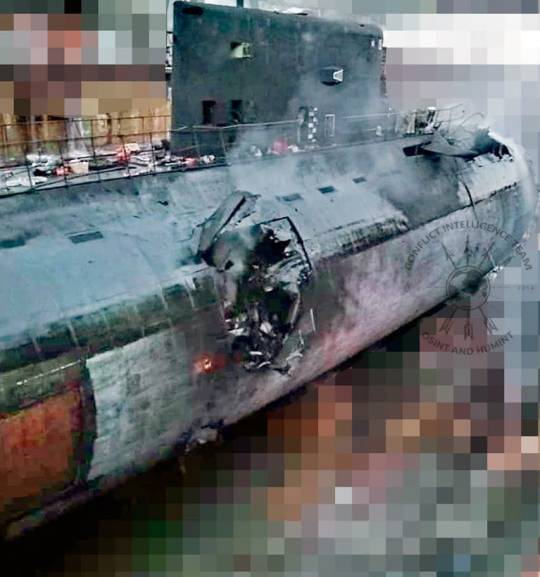
Russian Submarine Destroyed
The significant damage sustained by a Russian Navy Kilo class diesel-electric attack submarine after a Ukrainian cruise missile strike last week. The Kilo class boat, together with a Ropucha class landing ship, had been in dry dock in the Black Sea port of Sevastopol, in Russian-occupied Crimea, when it came under attack in the early hour of September 13.
The submarine in question is the Rostov-on-Don (B-237), an Improved Kilo boat, from the Project 636.3 class, which is capable of launching Kalibr land attack cruise missiles, of the type widely used against targets in Ukraine. This submarine entered service in 2014 and is one of four of its type with the Black Sea Fleet.
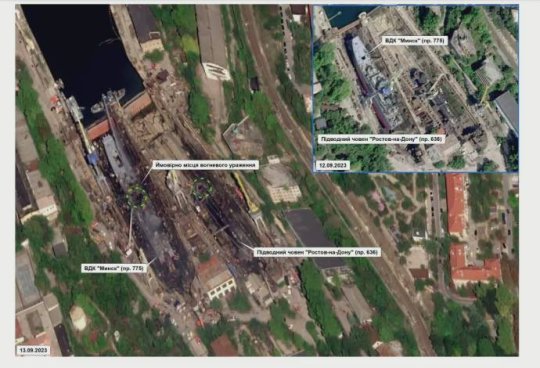
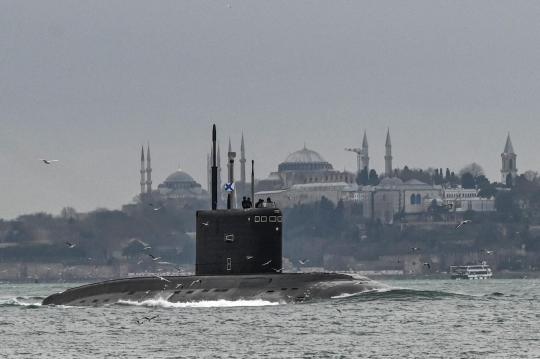
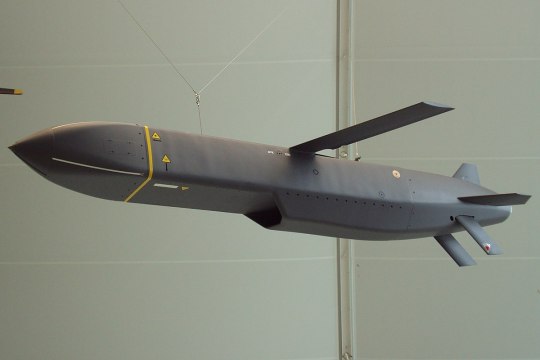
#ukraine#russia#russian war on ukraine#crimea#Black Sea port of Sevastopol#submarine#russian submarine destroyed#Russian Navy Kilo class diesel-electric attack submarine#Rostov-on-Don (B-237)#cruise missile strike#storm shadow#war#world at war#weapons#battle#fighting#combat
45 notes
·
View notes
Text
A Ukrainian Storm Shadow cruise missile smashes into a bridge in Crimea, Ukraine. 22 June 2023.
16 notes
·
View notes
Text
In honor of the Day of the Armed Forces of the Ukrainian Armed Forces, footage of the launch of "Storm Shadow" cruise missiles by Ukrainian Su-24s for strikes on Crimea was published for the first time.
1 note
·
View note
Text
After months of difficult slogging on the southern front, Ukraine made a decisive strike overnight Tuesday on the Russian-occupied Crimean Peninsula, home of what was just days ago the pride of the remnants of the Russian Black Sea Fleet. Now it is little more than a salvage operation—both in the waters around the dry dock, where an advanced diesel submarine and an amphibious ship got roughly handled, and for Russia’s shrinking international credibility.
The strike is important not just because it shrinks the size of Russia’s naval assets off the coast of southern Ukraine, under siege for about 500 days and with little chance to export its grains and other goods. Moscow had long warned that serious strikes on the Crimean Peninsula, the first part of Ukraine that it illegally occupied in 2014, would trigger broader retaliation, even nuclear strikes. But no. Ukraine, a country lacking in naval ships, already sank one Russian capital ship. Now it has sunk a sub.
“If you’re on a Russian naval ship, you’re not safe anywhere in the Black Sea, but you’re particularly not safe in a fixed location—in port or at anchor—where reasonable targeting information can be relayed to drones that can come out and get you,” said Mark Montgomery, a retired U.S. Navy rear admiral who is now at the Foundation for Defense for Democracies.
After using drones to disable air defense radar around Russia’s key naval base of Sevastopol in Crimea, Ukraine fired a salvo of missiles, reportedly British long-range Storm Shadows, into one of Russia’s largest dry docks early Wednesday morning, obliterating—according to satellite photos of the aftermath—a Kilo-class diesel submarine and mauling an amphibious landing ship. They also wrecked the docks, in one of the largest strikes on Sevastopol since the Kremlin launched its full-scale invasion of Ukraine last year.
Wednesday’s strike puts growing pressure on Russia’s Black Sea Fleet, which has been ground down by Ukraine’s MacGyver-like tactics, using U.S.-made Harpoon anti-ship missiles fired from truck beds and Ukrainian-made Neptune missiles, like the ones that put the Russian cruiser Moskva on the seafloor in April 2022, to keep itself supplied. Even though Ukraine has just a handful of small surface ships, maritime control is a different game now: There are fewer places for Russia to find safe harbor from Ukraine’s long-range missiles and drones, let alone refit its ships and men.
“Now they can’t rest and reconstitute in port,” Montgomery said.
Though the Kremlin is insisting that both ships damaged in Wednesday morning’s strike can be patched up relatively quickly, the attack, which left 24 people injured, raises new questions about the viability of Russia’s operations in Sevastopol, experts said. And that calls into question Russia’s entire control of the Black Sea.
The news comes as the Ukrainian counteroffensive on land runs into resistance. Russia has begun to harden a third line of defense in the Zaporizhzhia region, Ukrainian officials said on Wednesday, including anti-tank obstacles and roadblocks south of Robotyne that Ukrainian forces liberated in August.
Kyiv can likely keep up the pressure on Crimea for a while, if not for too long. While the Russian-occupied peninsula is fair game for military targeting in the eyes of Western officials, Ukraine has a limited number of the British-made Storm Shadow cruise missiles and French-made SCALP equivalents. Ukraine’s efforts to repeatedly hammer the Russian bridge across the Kerch Strait, to the east of Crimea, causing collapses of parts of the span in October 2022 and in July, show the vulnerability of the peninsula as a major resupply hub for Russian forces.
But if the Ukrainian offensive continues to pick up steam moving south, it could cause headaches for Kremlin military planners, who may have to move elements of command and control out of missile range. They may have to pull back even farther: The Biden administration is reportedly close to a decision over whether to send the long-range U.S. Army Tactical Missile System to Ukraine that could hit Russian targets up to 200 miles away.
It’s also a sign that Ukraine is getting naval capability from nontraditional sources, experts said, such as Western commando training for riverine operations and drones. They’re not the lightweights that the Russians might still think they are, said Jim Townsend, a former U.S. deputy assistant secretary of defense for Europe and NATO. “These guys are very clever. They’re fighting all over the place.”
Ukrainian officials also said on Monday that they had retaken several oil platforms in the Black Sea known as the Boyko Towers, taking away Russia’s ability to use them as floating bases.
But the increasing pace of strikes in Crimea could also force Russia to move more air defense assets onto the peninsula at a time when it can ill afford to take those batteries out of other occupied areas of Ukraine.
“If you’re a Russian, or if you live there in Crimea, you’re going to start feeling pretty vulnerable,” Townsend said. “It’s a psychological blow for sure.”
3 notes
·
View notes